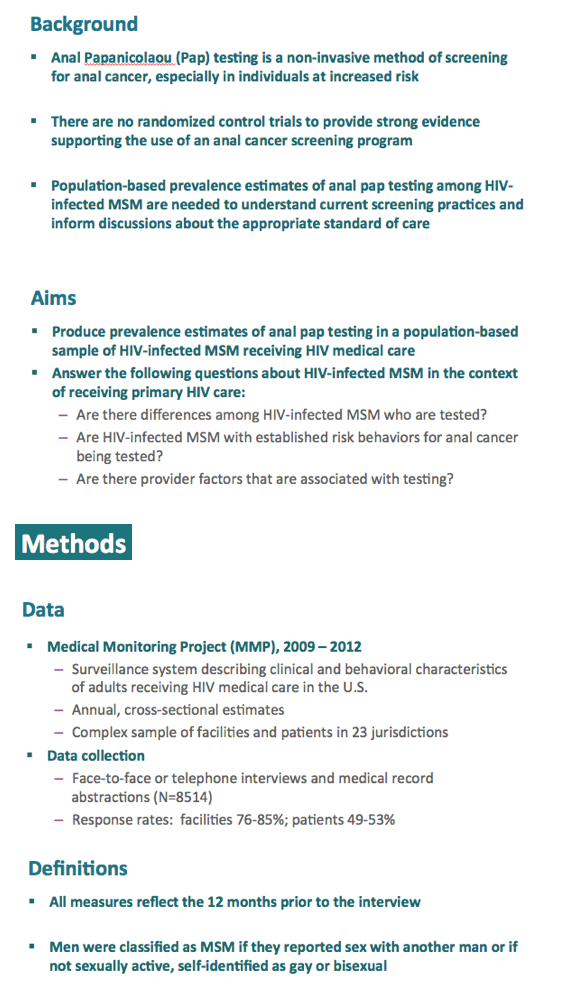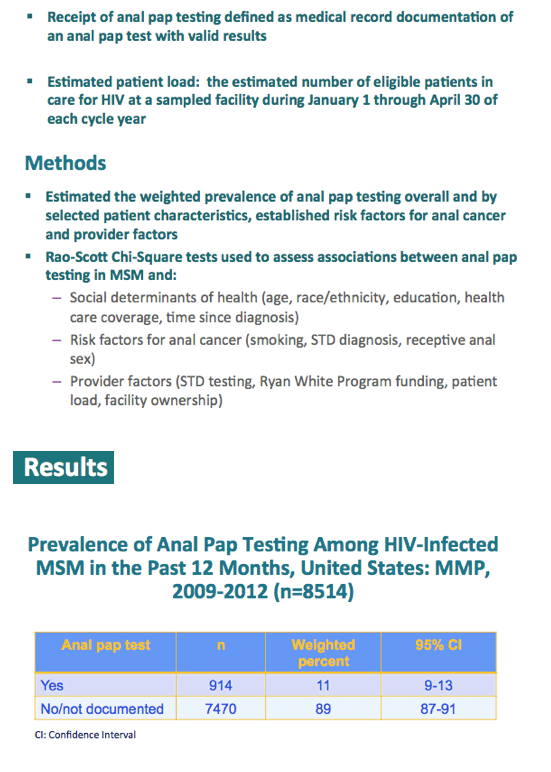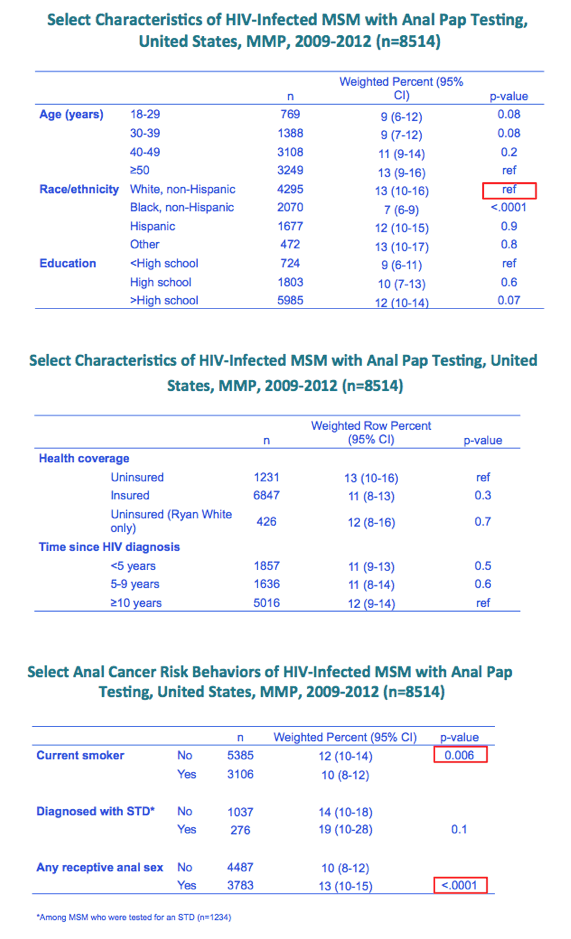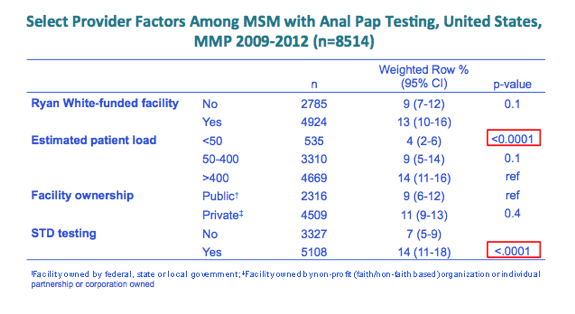 |
 |
 |
| |
[11%] One in 10 MSM in Care for HIV Screened for
Anal Cancer--Rate Lower in Blacks
|
| |
| |
"US HIV-positive MSM, with rates as much as 37-fold higher......Compared with white men, non-Hispanic blacks had a significantly lower pap testing rate (7% versus 13%......A total of 8514 men were classified as MSM and had both interview and medical record data. An estimated 11% (95% confidence interval [CI] 9-13) of HIV-infected of MSM overall received anal pap testing in the 12 months before interview.....lower in men with less than a high school education....Men seen in a medical practice with more than 400 patients had a higher testing rate (14%) than those seen in practices with 50 to 400 patients (9%, P = 0.1) or fewer than 50 patients (4%, P < 0.0001)." full report of data including slide presentation below
IDWeek 2016, October 26-30, 2016, New Orleans
Mark Mascolini
Only 1 in 10 US men who have sex with men (MSM) in care for HIV between 2009 and 2012 had anal cancer screening in the preceding year, according to analysis of a nationally representative sample by the Centers for Disease Control and Prevention (CDC) [1]. Black versus white MSM and smokers versus nonsmokers had lower rates of anal pap testing in the previous year.
Anal cancer incidence is on the rise among US HIV-positive MSM, with rates as much as 37-fold higher than the in the general population [2]. Because the benefit of screening for precancerous anal changes with a pap test and high-resolution anoscopy remains uncertain, the United States has no guidelines on anal cancer screening.
The CDC conducted this analysis to provide population-based prevalence estimates of anal pap testing in HIV-positive MSM, to learn more about current screening practices, and to inform ongoing discussion of these issues. The analysis involved MSM in the Medical Monitoring Project (MMP) from 2009 through 2012. During those years the MMP produced annual nationally representative cross-sectional estimates of people in care for HIV infection. MSM were determined to have anal pap testing if a valid test results appeared in their medical record.
Among 8514 HIV-positive MSM studied, 914 (11%) had an anal pap test in the past 12 months during 2009-2012. Compared with white men, non-Hispanic blacks had a significantly lower pap testing rate (7% versus 13%, P < 0.0001). There was a trend toward a lower testing rate in men younger than 40 than in those 50 or older (9% versus 13%, P = 0.08), and the testing rate tended to be lower in men with less than a high school education versus more than a high school education (9% versus 12%, P = 0.07).
Although smoking is an anal cancer risk factor, current smokers had a significantly lower testing rate than nonsmokers (10% versus 12%, P = 0.006). But men who reported any receptive anal sex, another anal cancer risk factor, had a significantly higher testing rate than men who did not have receptive anal sex (13% versus 10%, P < 0.0001). Insurance status and time since HIV diagnosis did not affect anal pap rates.
Men tested for any sexually transmitted disease (STD) had a twice higher anal pap test rate than men not tested for an STD (14% versus 7%, P < 0.0001). Men seen in a medical practice with more than 400 patients had a higher testing rate (14%) than those seen in practices with 50 to 400 patients (9%, P = 0.1) or fewer than 50 patients (4%, P < 0.0001).
The CDC investigators noted that MSM may have had an anal pap test at a facility not included in the survey, and the data collected did not distinguish between screening or diagnostic pap testing. Despite those limitations, the CDC proposed that "adoption of anal cancer screening guidelines may reduce morbidity and mortality" in this population. Like others, the researchers noted that cervical cancer screening with pap tests reduced morbidity and mortality in women with HIV. Anal cancer screening in MSM with HIV, the researchers proposed, "may have the potential to have the same success."
References
1. Freedman M, Weiser J, Beer LR, Shouse RL. Anal cancer screening in men who have sex with men in care for HIV infection, United States, 2009-2012. IDWeek 2016, October 26-30, 2016, New Orleans. Abstract 855.
2. Palefsky JM, Holly EA, Efirdc JT, et al. Anal intraepithelial neoplasia in the highly active antiretroviral therapy era among HIV-positive men who have sex with men. AIDS. 2005;19:1407-1414.






|
| |
|
 |
 |
|
|